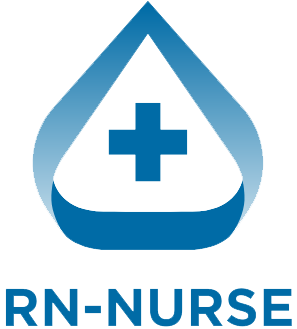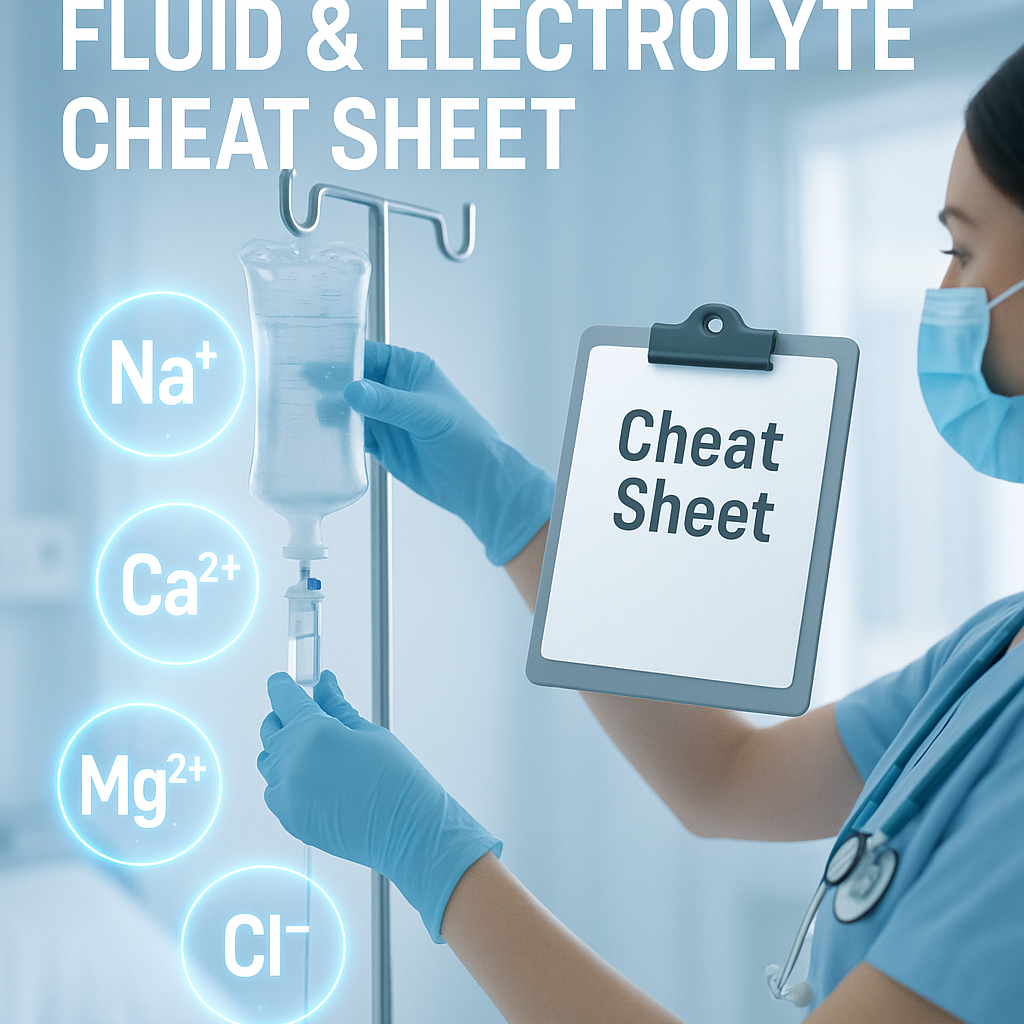Introduction
As a nurse, understanding fluids and electrolytes is key to keeping your patients safe. IV fluids are life-saving, but they can also lead to serious imbalances if not monitored carefully. This cheat sheet breaks down the essentials of what to look out for when managing IV therapy in a simple, easy-to-remember format.
📋 Quick Overview: Types of IV Fluids
TypeExampleWhat It DoesUse ForIsotonic0.9% NS, LRSame concentration as bloodDehydration, blood lossHypotonic0.45% NSPushes fluid into cellsCellular dehydrationHypertonic3% NS, D10WPulls fluid out of cellsCerebral edema, hyponatremia
Tip: Always check your patient’s labs and vitals before hanging any fluid!
💡 What to Monitor with IV Fluids
1. Sodium (Na⁺)
- Normal range: 135–145 mEq/L
- Too Low (Hyponatremia): Confusion, headache, seizures
- Too High (Hypernatremia): Thirst, dry mouth, restlessness
- Watch: Mental status, urine output, and daily weights
Nursing Action:
If giving hypotonic fluids, monitor for low sodium. With hypertonic fluids, watch for signs of fluid overload and high sodium.
2. Potassium (K⁺)
- Normal range: 3.5–5.0 mEq/L
- Too Low (Hypokalemia): Muscle weakness, irregular heartbeat
- Too High (Hyperkalemia): Heart arrhythmias, tingling, weakness
- Watch: EKG, muscle strength, kidney function
Nursing Action:
Never push potassium IV. Always dilute and give slowly. Monitor EKG closely.
3. Calcium (Ca²⁺)
- Normal range: 8.6–10.2 mg/dL
- Too Low (Hypocalcemia): Numbness, tingling, muscle cramps
- Too High (Hypercalcemia): Constipation, lethargy, bone pain
- Watch: Muscle twitching, Chvostek’s/Trousseau’s signs, EKG
Nursing Action:
Calcium may drop with large amounts of blood transfusions or citrate. Use caution in patients with renal failure.
4. Magnesium (Mg²⁺)
- Normal range: 1.6–2.6 mEq/L
- Too Low (Hypomagnesemia): Tremors, seizures, increased reflexes
- Too High (Hypermagnesemia): Slow reflexes, low BP, weak pulse
- Watch: Deep tendon reflexes, respirations, heart rhythm
Nursing Action:
Magnesium is often replaced in ICU settings. Always monitor heart rhythm and respiratory status.
💧 Fluid Volume Monitoring
Even the right fluid can be harmful if too much or too little is given. Here’s what to monitor:
- Intake and Output (I&O): Make sure output (urine) matches input (IV + PO fluids)
- Daily Weights: 1 kg = 1 liter of fluid
- Lung Sounds: Crackles may mean fluid overload
- Blood Pressure: Hypotension = underhydrated, Hypertension = overhydrated
- Edema: Pitting in legs, hands, sacrum = fluid overload
🧠 Electrolyte Lab Trends: Watch the Pattern
Always compare current labs with previous ones to see if things are improving or worsening.
- Is sodium trending down? Check for confusion or seizures.
- Is potassium climbing? Watch the heart.
- Is magnesium low? Seizure risk rises.
⚠️ Warning Signs to Act Fast
SymptomPossible CauseConfusion, seizuresHyponatremia or hypocalcemiaMuscle cramps, twitchingLow calcium, potassium, or magnesiumIrregular heartbeatHigh or low potassium or magnesiumCrackles, shortness of breathFluid overloadLow urine outputKidney issues, fluid deficit
🧩 Mnemonic: SPaCeMaN
To remember what to monitor:
- S = Sodium
- P = Potassium
- C = Calcium
- M = Magnesium
- N = Nursing interventions
Conclusion
IV fluids are powerful tools—but they need to be managed carefully. This fluid and electrolyte cheat sheet helps you know what to watch for, what actions to take, and how to prevent complications before they start.

